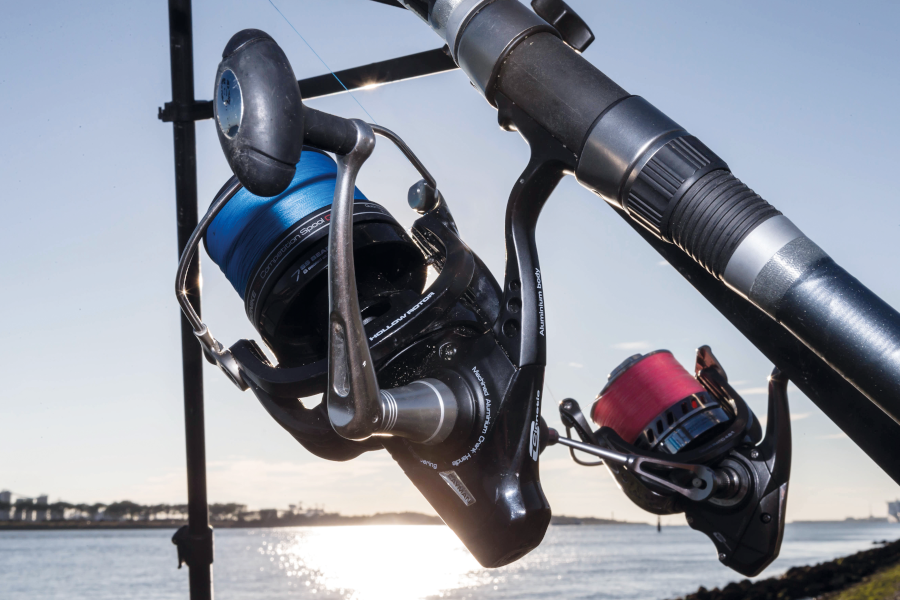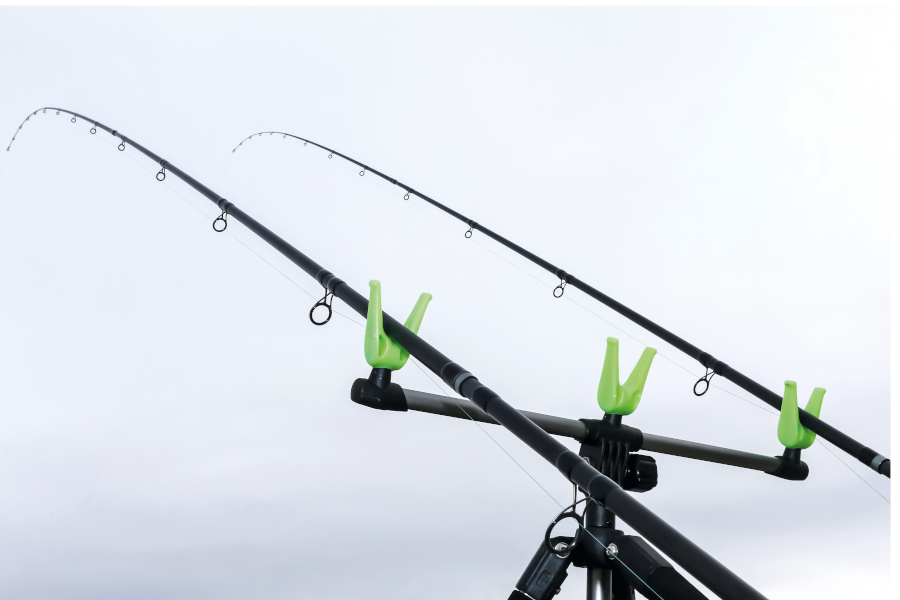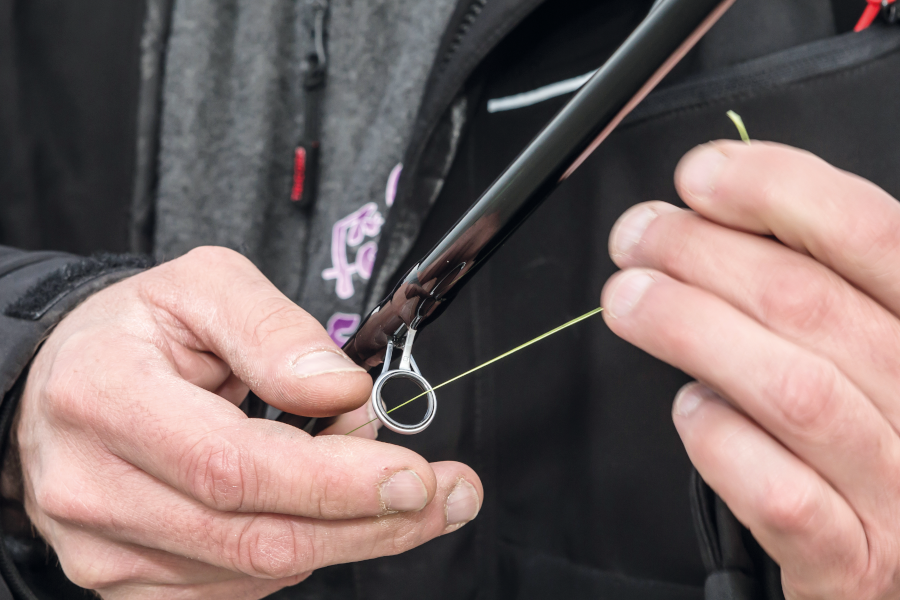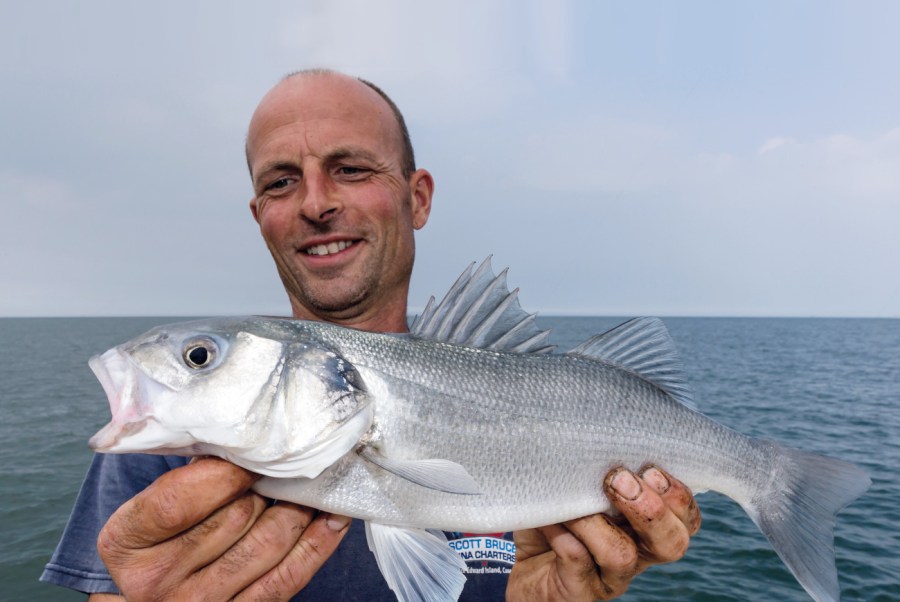Dutch angler Martijn Dekkers cuts to the chase with an expert guide to sea fishing tackle choices for anglers new to shore fishing
Your fishing rod is your tool to get the lead and your line where you want it. These days you cannot really buy bad rods anymore. However, there is certainly a difference between good and less good rods.
Upon purchasing an often-made mistake is to buy a rod that you’ve seen someone else using. Of course, this is a good indication which rods are currently popular; and there are obviously good reasons why this type of rod is a popular seller, but to just flat-out buy a rod because everybody is using it is asking for trouble.
A rod has to fit you like a glove. It is almost comparable to a garment; if it is too large or too small or just does not fit comfortably it will end up at the back of your wardrobe or fishing shed.
Sea fishing reels

With regards to reels there is no need for all that much discussion, these need to be able to reel the line in quickly and have a good and reliable drag. The line speed of your reel informs you how much line it will take in one rotation of your handle. If we break it down into steps you will first need to ask yourself what you will be using the reel for.
If you fish at modest distances and in estuaries then a 4000-6000 size reel will be sufficient. It can hold enough line and fishes very nicely under the lighter rods that we now use. In my case this is a Daiwa Ballistic 4000, a super reel, saltwater-resistant and with an exceptionally good drag.
It is from the more expensive range, but worth every penny. If you fish further away in water full of obstacles, then opt for an 8000-10000 or even a 140000 size reel. These are powerful and will take in a lot of line. Of these bigger reels I prefer to use the Shimano Ultegra.
Everything about this reel is reliable, from the drag to the level of service if something happens to be wrong with it. Penn also has very good reels on the market, the Surfblaster is real workhorse that has been adopted by many sea fishers. Important to note is that every brand uses slightly different dimensioning and models can vary from brand to brand.
The best thing to do is to visit your angling retailer to have a look at and feel the reel. As quite a bit of force will be exerted on the reel-spool and axle all seaworthy reels have a thick axle. So upon purchase be sure to check the thickness of the axle, if this is quite thin it will be fragile, thicker axles are better for our type of fishing.
Saltwater-resistance is mostly a sales term, all reels need maintenance! Saltwater-resistant reels will keep working quite a bit longer but without maintenance they will also not last many years. The maintenance needed is very modest at that; just rinsing it off with lukewarm water after every session really helps.
As you will hit the shower anyway after fishing it can be quite convenient to bring along your reels. Give them a quick rinse and put them on a towel to dry – spool separate from the reel, of course. Be sure to turn them every now and then so all water will run out and they will dry.
If you want to take special care of your reel have them serviced once every one or two years by someone who knows what they are doing.
Rod choice
The most usual length of a beach rod is somewhere between 390cm and 500cm. If you are just starting out it is best to opt for a rod of between 390cm and 420cm in length and preferably not to rigid. This is a good length for learning to cast and fish. After you have gained some experience you can, of course, move on to a longer and more rigid rod.
An experienced fisher will cast a lot further with it. The taller you are, the longer your rod may be, but be sure to not go overboard. A rod that is too long is harder to handle and brings more disadvantages than advantages. And it does not end here; There is also a real difference between fishing in summer and winter.
If you are an angler that frequents the waterside mainly during the summer you usually will not need to cast all that far. Naturally our summer species might be located a bit further away at times but you can always catch them within 100m and even 50m from the shore.
For these distances a short lighter beach rod is more than sufficient and a maximum of 150g of lead is enough. A rod that can cast more lead is not necessary. A specialized beach feeder has been developed for this type of fishing, so be sure to take a look at it.
If you tend to fish during the colder months for species like whiting and flounder then further casts with heavier lead are usually needed. A rod with a bit more length and rigidness would be the better choice here.

Pier rods
People always talk about beach rods and never really about pier rods, but if I could add something to the already more than massive range of rods that is available on the market it would be a robust pier rod.
As fishing from a pier requires a rod with totally different characteristics than one used on the beach! Looking at the range that is currently available on the market there are only a couple of rods that can really be used for heavy duty work from the pier.
Next to that there are some rods that are ‘okay’, but the rest are totally useless for this type of fishing.
Heavy duty work from the pier translates to big strong fish like sharks, rays, bass or cod. You are dealing with strong currents, rock formations and other obstacles. This last factor is a reason to opt for a robust rod. If you hook a good size fish on the beach you can be pretty sure you will not run into obstacles while landing it and your patience will be rewarded.
But from the pier you need to keep optimal control of the fish and that really only works when you can keep the pressure on! If you are working from the pier you should not be afraid to fish with heavy duty material. I have seen many a fish lost purely because people were using a rod that was too light. Control is everything.
Your rod needs to be between 450cm and 500cm in length, with a casting weight of 200g minimum. Personally, I prefer to fish with rods that can handle 250g and I have already lined up a purchase of a rod with even more body.
Tight and robust are the keywords for success from the pier. The real difficulty is in informing you which rods can be used for fishing from an pier, as I am not familiar with all beach rods. However, it is clear that they usually originate from countries where people are much more used to fishing from rock formations than we are.
Next to well-known brands like Shimano, Daiwa or Penn you also have the Spanish brand, Cinnetic, and the Italian brand, Vercelli. They both have a number of really good rods in their range that are ideal for this type of fishing. If you will be fishing from the pier on more common species like whiting or flounder you can just use a regular beach rod.
Of course, you will lose tackle every now and then after getting caught but these species will not hide in obstacles. What is important, however, is to reel in hard to make sure that your lead is pulled up and away from snags and other obstacles. Do not make the mistake of stopping reeling in along the way to feel if a fish is on the line.
You will find that out once you reach the shore. If you stop reeling in you will lose tackle! The better angling retailers will have multiple rods available that you can hold and even take outside to ‘practice’ before you buy them, be sure to make use of that.
Line choice
Now that we know what to keep an eye on while purchasing a rod and reel we get to the best line to use. The fishing line is probably the most important factor while fishing so this needs to be very reliable.
There are various types of fishing lines which come in multiple versions and sizes. It is more than logical that someone new to sea fishing can get really confused when they are presented with the multitude of line options on offer!
Fishing lines can be made from different materials. To save you from having to read through a mountain of non-relevant information I will discuss two types of fishing lines with you: regular nylon fishing line and braided fishing line, all other types of lines, like dracon, fluorocarbon, kevlar, etc. are not relevant yet, although they will be for creating rigs – more on that later in this series.
Monofilament
Just about every fisher has started out fishing with monofilament nylon fishing line and in most cases nylon still is a fine choice and, for people just starting out, the best choice even! A nylon fishing line is not really expensive these days. Around Five pounds will buy you enough line to feel a reel.
Two main advantages of a nylon fishing line are the smooth structure which give it better casting abilities than just about any other type of line. Next to this it has a very good resistance to friction. But the largest advantage is that it can stretch quite a bit. Depending on your line it will stretch between 10 and 20 per cent meaning every meter can be stretched to 110 to 120cm.
This ability to stretch acts as a sort of elastic shock absorber when you are landing one or multiple fish. You will get less pressure on the hook and it will also be much less quick to tear out of the mouth. This is very important when you are fishing with rigid rods like a beach rod.
For regular sea fishing a nylon line with a diameter of 30/00 to 35/00 is a solid choice. You are then using a line with a pulling force of around 10 kilograms; strong enough to cast your lead and land any fish.
Using this diameter you do not need a shockleader, nor do you need to make difficult knots on the waterside. If you are more experienced you can switch to thinner diameters like 22/00 – 25/00, but you will need to use a shockleader then, preferably one that tapers, but for the time being you do not need to this this.
Braid

Another type of line that is used often is a braided fishing line. Braid is a super strong, supple synthetic fibre with a low density. This combination makes braid very useful for bulletproof vests, shoes, cables and fishing lines.
These fishing lines consist of multiple strands which are braided together making the whole even stronger. The main advantage of a braided fishing line is that you opt for really thin lines. A braided fishing line with a pulling force of 10 kilograms comes down to a diameter of about 12/00mm to 15/00mm.
The fact that it does not stretch is seen as an added advantage but that really comes down to the type of fishing. If you are fishing with lures then it is better to fish without any stretch in your line. You will fish much more efficiently this way. If you are fishing at a large distance a line without stretch is a must too.
The main disadvantages of using a braided line is that is not resistant to friction at all. When your line catches a rock or a mussel it will snap immediately, so a rubbing leader is definitely needed.
If you decide to buy braided fishing line be sure to ask for information, as the line-characteristics can vary greatly. The quality also greatly differs between the different brands. Most well-known brands sell mainly good quality braid but even then there can be a lot differences.
First thing is deciding which type of fishing you will use it for. If you are fishing from the shore then you will need to cast, so you will need a round and smooth line. The rounder and smoother your line is the further you will cast and the less amount of current you will catch.
Fishing can be roughly divided into two parts: shore or boat fishing and lure fishing, both ask for a different type of braid. When you are fishing on the bottom from the shore you will often want to cast far away, so your line needs to be round and as smooth as possible, but also have some friction-resistance.
A braided line like the Berkley Fireline or Black Velvet would be a fine choice for this type of fishing. If you tend to fish from the shore then opt for the smoother and rounder Fireline. But if you fish from a boat then it is better to choose the strong black velvet. After all you do not need to cast dozens of meters now.
For lure fishing a perfect round and super smooth line will be of great advantage. You can cast far with it and it cuts through the water so that you can pull in your lure in a nice line and it will hardly catch any current. A line like the Daiwa J braid X8 is one of the best for this discipline.
The only real disadvantage of this type of line is the friction-resistance.
When purchasing also make sure you are not buying sinking line. This type of line is very popular with carp and feeder fishers but is not useful for sea angling. The chances of your line getting caught or damaged by contact with mussels or oysters is very big when using a sinking line.
For both types of fishing lines the following applies: A bright colour is much easier to follow than a less striking colour. Following your line is especially important when your fishing with lures or fishing for larger species as you will want to know where your lure or big fish is in the water.
You can capitalize on this. Another thing to keep in mind when buying cheaper fishing lines is that the line diameter or pulling force is often not reliable. This applies especially to braided line. n







